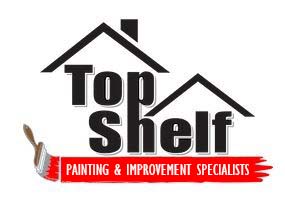What to Know When Applying Epoxy Floors in Industrial Buildings

Epoxy flooring is preferred in industrial buildings for its strong, durable and resistant qualities. It can easily withstand heavy traffic and sticks pretty well to the base. It is not difficult to see why it has made its way into all types of industries. It can be found in loading areas, commercial shops, maintenance spaces, manufacturing plants, factories, laboratories, warehouses and locker rooms. Epoxy floors are easy to maintain and can withstand a lot of battering. It locks out grease, oil, dirt, and water from ruining your floor.
Shortcomings of epoxy floors
It has been described as durable, beautiful, smooth, low- maintenance, cheap, safe and resistant to chemicals. Does it this golden child of floors have any disadvantages? Well unfortunately yes.
Harmful side effects
Epoxies are solvent based in nature and can have adverse side effects to humans. Exposure to significant levels of epoxy can cause asthma and sensitivity to epoxy. They can also create a myriad of respiratory problems if space is poorly ventilated. High temperatures are also known to make epoxy evaporate and cause damages to eyes, lungs, throat, and nose. Some industries by nature and activity have very high temperatures which expedite epoxy evaporation. To get the right balance and protect your workers and clients from serious respiratory problems, ensure the industrial building is well ventilated, and temperatures kept at low levels. You don’t have to wait for everybody in the factory floor to fall sick before taking action. In worst case scenarios, epoxy vapors can settle at the respiratory systems. Rule out epoxy when someone is complaining of unexplained irritability and allergies.
When setting up epoxy, the installer must wear protective gear to protect his eyes, hands and respiratory system.
Temporary
As long-lasting, durable and resistant as it is, epoxy is a temporary flooring coat. Yes, it can withstand heavy use but not for long. To maintain its beauty and luster, you will have to replace it more often than you would other floor types. It can also crack or chip hence needing repairs. Epoxy cracks if not repaired in time may lead to severe damage and require the whole floor to be replaced. It cannot withstand heavy objects which is ironical because it is made for industrial buildings. Where else do you have massive objects if not factories and loading docks?
Slippery when wet
One of the advantages of epoxies is that they are slip resistant but only when dry. A wet epoxy floor is highly hazardous it’s a lot easier to skid than on other floor types. Be extra careful in case of any spillage.
Flammable
Epoxies are also highly flammable, making it a risky choice in industrial buildings. You must weight its benefits against this significant flaw.
Compatibility
Epoxies are not compatible with all floor types. If you have a wooden floor, you may be able to coat it with epoxy. Wooden surfaces expand and contract according to room temperature; this will cause the epoxy coating to crack. It cannot withstand the constant expansion and contraction. Epoxies functionality and benefits drop in colder temperatures. Some plants and factories must maintain low temperatures, and it may not be possible to raise temperatures for the coating to be done.
Ventilation
Not suitable for enclosed spaces because it requires ample ventilation. If epoxy is used in an insufficiently ventilated room, then it exposes users to harmful side effects and can damage the respiratory problems.
Installing Epoxy
Installing epoxy is labor and resource intensive. The surface must be cleaned and dried correctly before the epoxy coating is applied. You have to ensure that there are no grease or oil residues on the floor as this will hamper the application process. Any cracks in the floor must also be filled before you can apply epoxy. Applying epoxy is also a tedious process. The first coat must sufficiently dry before further layers are applied. It takes a couple of days for the epoxy to dry and this disrupts to day to activities of the industry.
If you do not prepare the surface as required or don’t install it correctly, then the coating will not last. It will soon show cracks. You need expensive cleaning solution and materials to prepare the surface and to stick the epoxy coat to the floor. Moisture, high humidity levels also damage epoxy floors, they do not adhere well to moist surfaces. It appears as if the ‘epoxical stars’ must align to get the application right.
The industrial floor must be assessed by an epoxy installation expert to determine whether it’s suitable for epoxy. Check moisture content and humidity levels for optimum results.
